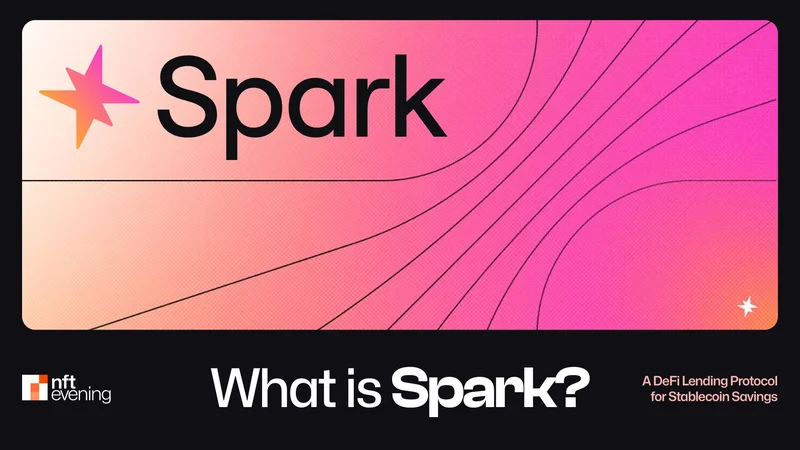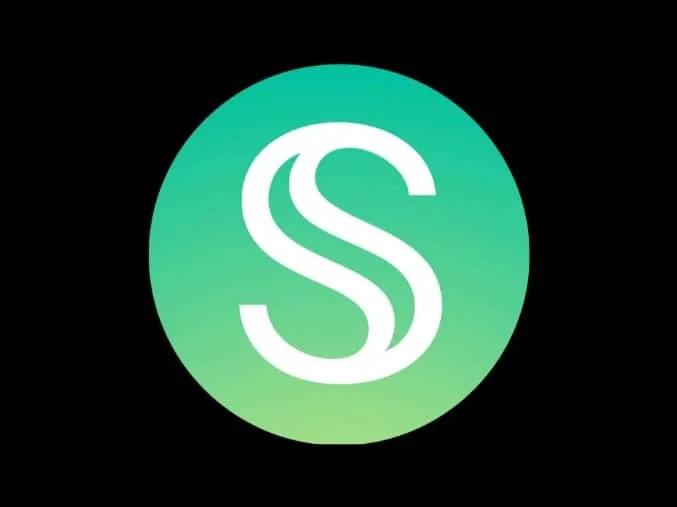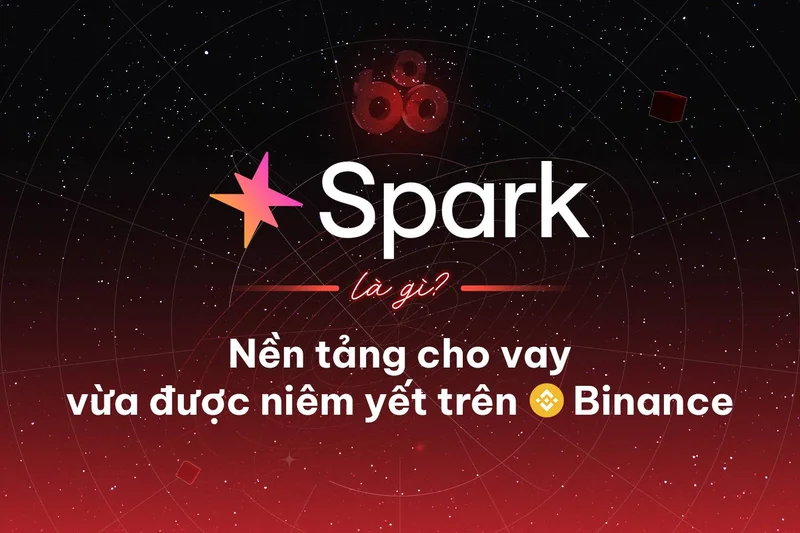SparkLend is a decentralized, non-custodial liquidity market protocol built on the Ethereum blockchain. Simply put, it functions like a bank without intermediaries, allowing users to borrow and lend directly. It powers the Spark Borrow product, enabling participants to engage as either borrowers or lenders.

1. Why Choose SparkLend?
- Decentralized: No centralized authority—fully transparent and secure.
- Non-custodial: You retain full control over your assets at all times.
- Earn Passive Income: Lend your idle crypto to earn interest.
- Flexible Borrowing: Instantly borrow assets when needed.
- Deeply Integrated with Aave V3: SparkLend is a fork of Aave V3, offering a nearly identical user experience and functionality.
What is Spark Borrow?
Spark Borrow is the core product of SparkLend. It enables users to borrow various crypto assets using overcollateralized positions, while lenders supply liquidity to earn yield.
2. Getting Started with SparkLend: Setup & Requirements
Connect Your Wallet: Which Wallets Are Supported?
To use SparkLend, you’ll first need to connect a supported Ethereum wallet. SparkLend supports many popular wallets, such as:
- MetaMask: The most popular browser extension wallet—user-friendly and reliable.
- Ledger: A hardware wallet offering top-notch security.
- Trezor: Another leading hardware wallet choice.
- Coinbase Wallet: A mobile wallet provided by Coinbase.
How to Connect:
- Visit the official SparkLend website.
- Click the “Connect Wallet” button.
- Select your preferred wallet.
- Follow the prompts to complete the connection.
Pro Tip: We recommend using MetaMask for its best-in-class compatibility and ease of use with SparkLend.
Understanding Gas Fees: A Key Cost Factor on Ethereum
Every transaction on Ethereum requires a gas fee, which fluctuates based on network congestion.
Where to Check Gas Fees:
Note: When gas prices are high, consider lowering your gas fee—but this may delay transaction confirmation.
3. Hands-On with SparkLend: A Step-by-Step Lending & Borrowing Guide
Supplying Assets: Become a Lender & Earn Interest
- Connect your wallet.
- Choose the asset to deposit (e.g., ETH or DAI).
- Enter the amount.
- Click “Deposit”.
- Confirm the transaction in your wallet.
Insert screenshot here showing the deposit interface.
Expert Tip: Higher-yielding assets offer better returns but may come with higher volatility—choose wisely.
Borrowing Assets: Meet Liquidity Needs with Flexibility
- Connect your wallet.
- Select the asset to borrow.
- Enter the desired amount.
- Choose a rate mode (Stable or Variable).
- Click “Borrow”.
- Confirm the transaction in your wallet.
Reminder: Borrowing requires overcollateralization. Make sure you have enough collateral deposited.
Managing Your Position: Monitor Your Health Factor
Health Factor is a critical metric representing the safety of your loan. If it drops below 1, your position risks liquidation.
Where to View:
- The SparkLend dashboard shows your current Health Factor.
Pro Tip: Check your Health Factor regularly. If it drops, either repay part of your loan or add more collateral.
Repaying Loans: Stay on Top of Debt & Avoid Liquidation
- Connect your wallet.
- Select the asset to repay.
- Enter the repayment amount.
- Click “Repay”.
- Confirm the transaction in your wallet.
Insert screenshot here showing the repayment interface.
Common Mistake: Forgetting to repay leads to interest compounding—and potential liquidation.
Withdrawing Assets: Redeem Your Funds Anytime
- Connect your wallet.
- Select the asset to withdraw.
- Enter the amount.
- Click “Withdraw”.
- Confirm the transaction in your wallet.
4. Risk Management & Security: Protecting Your Assets
Smart Contract Risk: Understanding Vulnerabilities
SparkLend is governed by smart contracts, which may contain bugs or vulnerabilities that could result in fund loss.
Security Checklist:
- Audit Reports: Verify whether SparkLend has passed professional security audits.
- Community Feedback: Read user reviews and community discussions.
- Bug Bounty Programs: Check whether SparkLend offers rewards for vulnerability disclosures.
Liquidation Risk: Avoid Forced Position Closures
Liquidation occurs when your collateral is forcibly sold to repay your debt. Avoid it by:
- Maintaining a strong Health Factor (above 1.0)
- Adding more collateral when your Health Factor drops
- Repaying part of the loan to reduce leverage
Wallet Security: Keep Your Private Key Safe
Your private key is the only way to access your crypto. Losing or exposing it means losing your funds.
Best Practices:
- Use hardware wallets for secure, offline storage
- Back up your key in a safe location (paper, metal, or secure drive)
- Never share your private key with anyone
5. Cost Analysis: Optimize Returns by Minimizing Expenses
| Fee Type | Description | Influencing Factors | Optimization Tips |
|---|---|---|---|
| Gas Fees | Transaction fees on Ethereum | Network congestion, transaction type | Use off-peak hours for lower costs |
| Borrowing APR | Interest paid on borrowed assets | Supply/demand, rate type (stable/variable) | Compare APRs and choose the best mode |
| Liquidation Penalty | Fee paid when your position is liquidated | Collateral ratio | Maintain a healthy Health Factor |
6. The Future of SparkLend: Roadmap & Innovation Potential
Layer 2 Integration: Lower Costs, Higher Speed
SparkLend may integrate with Layer 2 scaling solutions like Optimism or Arbitrum to reduce gas fees and improve efficiency.
Asset Expansion: More Options, Greater Utility
Future support could include additional crypto assets, including NFTs and RWA (Real-World Assets), expanding SparkLend’s use cases.
New Lending Models: Enhanced Flexibility
Features like flash loans or unsecured borrowing may be introduced to unlock more customized financial strategies.
FAQ
Q: Is SparkLend safe to use?
A: SparkLend has undergone professional audits, but smart contract risks remain. Always take precautions and use secure wallets.
Q: How can I maximize returns on SparkLend?
A: Supply high-yield assets and carefully manage your borrow positions to minimize liquidation risks.
Q: What’s the difference between SparkLend and Aave?
A: SparkLend is a fork of Aave V3, sharing similar features and UI/UX. However, asset offerings and parameters may differ slightly.
Related Articles

What is sUSDS? How Do I Acquire sUSDS?
This guide will walk you through Sky Savings’ sUSDS and sUSDC—your gateway to earning yield with stablecoins while keeping your funds secure.Sky Savings: Your Journey to Stablecoin Yields Begins HereW
June 26, 2025
What is SparkLend? A Complete Guide from Beginner to Pro
SparkLend is a decentralized, non-custodial liquidity market protocol that allows users to participate as lenders or borrowers. Lenders provide liquidity to earn passive income, while borrowers can ta
June 24, 2025
What Exactly Does Spark Protocol Do? A Complete Guide
This guide will walk you through Spark Protocol — an innovative platform designed to tackle the long-standing issue of fragmented liquidity in the DeFi space. You'll learn how to earn yield, borrow as
June 24, 2025
